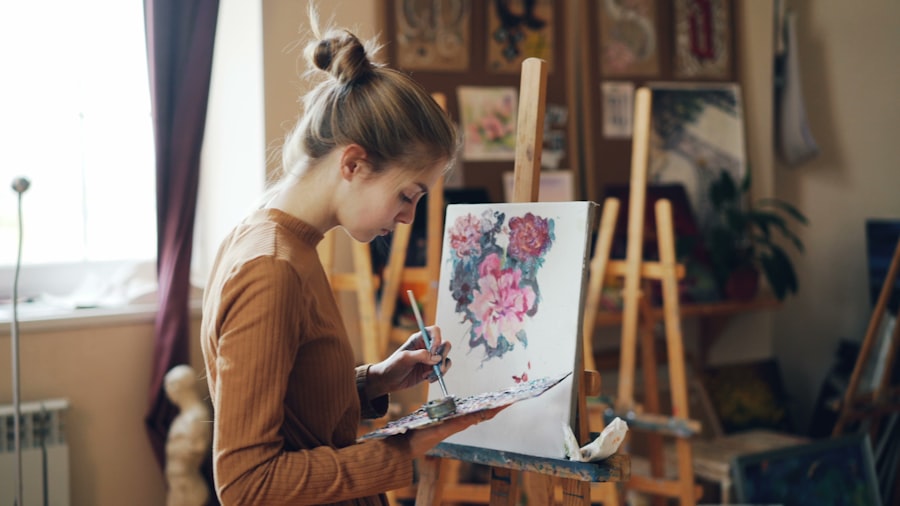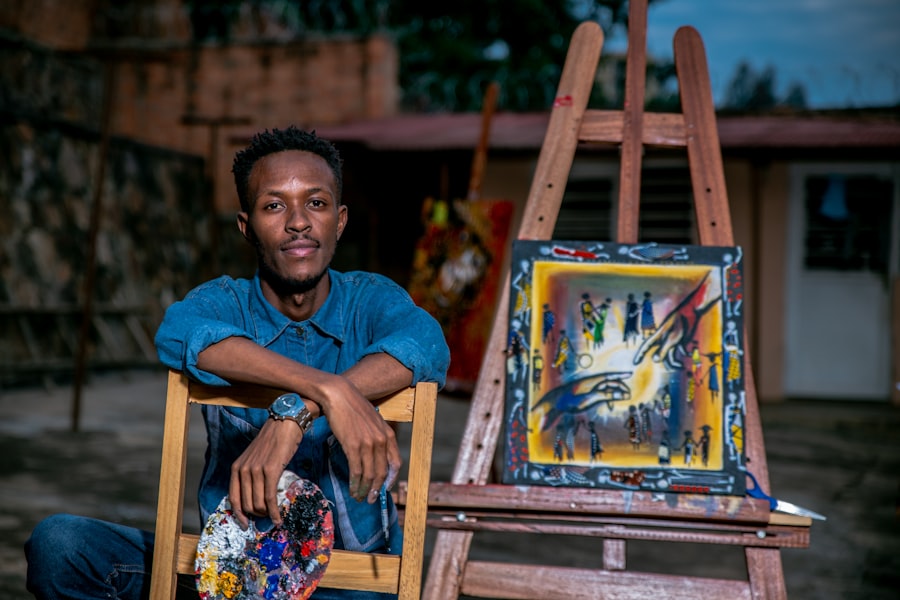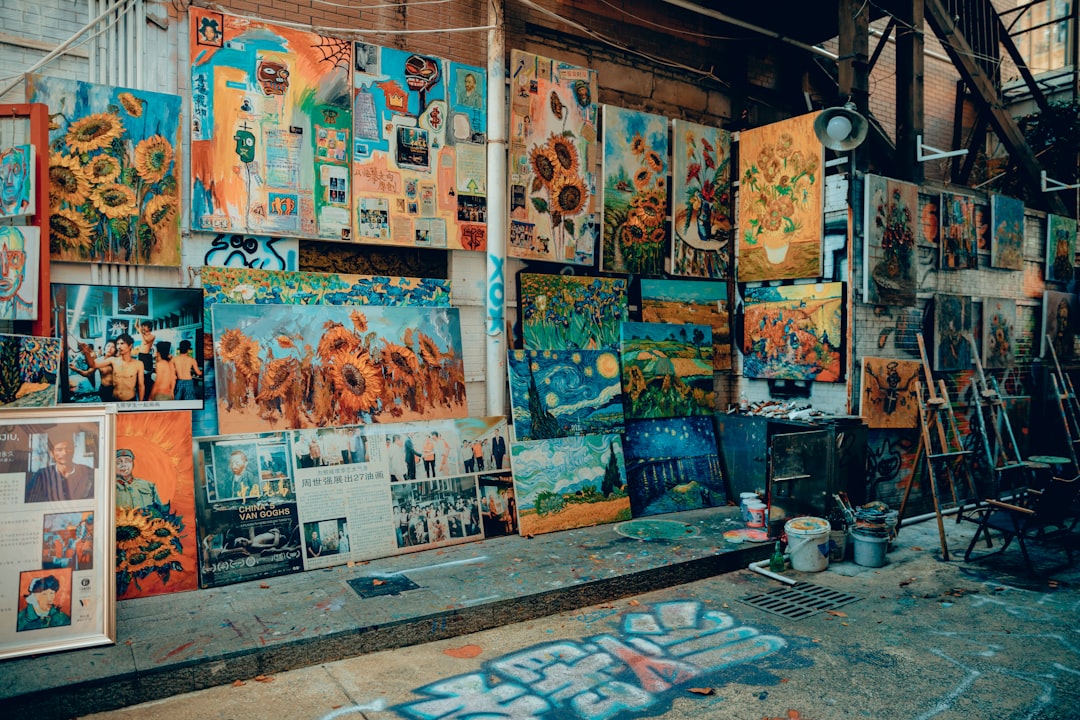In recent years, you may have noticed a remarkable transformation in the art world, driven largely by the rise of artificial intelligence (AI). This technological advancement has not only changed how art is created but has also influenced how it is perceived and valued. As AI continues to evolve, it has begun to play a significant role in various artistic domains, from visual arts to music and literature.
You might find yourself wondering how this shift is reshaping the landscape of creativity and expression. The intersection of technology and art is a fascinating realm that invites exploration, raising questions about the future of artistic endeavors. As you delve deeper into this phenomenon, you will discover that AI is not merely a tool for automation; it has become a collaborator in the creative process.
Artists are increasingly embracing AI as a means to push boundaries and explore new possibilities. This collaboration between human creativity and machine learning is redefining what it means to be an artist in the 21st century. The rise of AI in the art world invites you to consider the implications of this partnership and how it might influence your understanding of creativity itself.
Key Takeaways
- AI is revolutionizing the art world, impacting traditional art forms and artistic innovation.
- AI serves as a powerful tool for artists, enabling new forms of creativity and expression.
- The debate over whether AI poses a threat to artistic creativity is ongoing, with ethical implications and concerns about commercialization.
- AI has the potential to enhance artist collaboration and make art more accessible to a wider audience.
- Despite its capabilities, AI cannot replace the human touch and the unique expression of individual artists.
The Impact of AI on Traditional Art Forms
The advent of AI has had a profound impact on traditional art forms, challenging established norms and conventions. You may have observed that painters, sculptors, and other traditional artists are now incorporating AI-generated elements into their work. This fusion of technology and traditional techniques has led to innovative creations that blur the lines between human-made and machine-generated art.
For instance, you might come across paintings that are partially created by algorithms, resulting in unique visual experiences that would not have been possible without AI’s involvement. Moreover, AI’s ability to analyze vast amounts of data allows it to identify patterns and styles that can inspire artists.
The integration of AI into traditional practices not only enhances creativity but also encourages artists to rethink their approaches. As you explore this evolving landscape, you will likely appreciate how AI is breathing new life into age-old art forms while simultaneously challenging the very definition of what constitutes art.
AI as a Tool for Artists

As an artist, you might be intrigued by the ways in which AI can serve as a powerful tool in your creative arsenal. From generating ideas to assisting in the execution of complex projects, AI offers a range of functionalities that can enhance your artistic process. For example, you could use AI algorithms to generate unique patterns or color palettes that inspire your next painting or sculpture.
This technology can help you break through creative blocks by providing unexpected suggestions that spark your imagination. Additionally, AI can streamline certain aspects of your workflow, allowing you to focus more on the creative elements of your work. You may find that using AI for tasks such as image editing or composition can save you valuable time, enabling you to experiment with different styles and techniques without the constraints of manual labor.
By embracing AI as a collaborative partner, you can expand your creative horizons and explore new avenues of expression that were previously unimaginable.
The Debate: Is AI a Threat to Artistic Creativity?
| Debate Topic | Is AI a Threat to Artistic Creativity? | |
|---|---|---|
| Metrics | Yes | No |
| Artistic Quality | AI can produce high-quality art | Human creativity is unique |
| Originality | AI can replicate existing styles | Human artists can create original work |
| Emotional Connection | AI may lack emotional depth | Human art can evoke strong emotions |
| Future Impact | AI may change the art industry | Human creativity will remain essential |
As you navigate the evolving relationship between AI and art, you may encounter a contentious debate surrounding the potential threat that AI poses to artistic creativity. Some critics argue that reliance on AI could lead to a homogenization of artistic expression, where unique voices are drowned out by algorithmically generated content. You might resonate with concerns that the essence of human creativity could be compromised if artists begin to rely too heavily on machines for inspiration and execution.
On the other hand, proponents of AI in art argue that technology can enhance rather than diminish creativity. They contend that AI serves as a catalyst for innovation, pushing artists to explore uncharted territories and challenge conventional boundaries. As you consider both sides of this debate, you may find yourself reflecting on the nature of creativity itself—whether it is an inherently human trait or if it can be shared with machines in meaningful ways.
The Role of AI in Artistic Innovation
In your exploration of AI’s impact on art, you will likely come across numerous examples of artistic innovation driven by this technology. Artists are increasingly using AI to create works that challenge traditional notions of authorship and originality. For instance, you might encounter pieces generated entirely by algorithms or collaborations between human artists and AI systems that produce unexpected results.
This innovative spirit is reshaping the art world, encouraging artists to think outside the box and experiment with new forms of expression. AI’s role in artistic innovation extends beyond mere creation; it also influences how art is experienced and consumed. You may find interactive installations that utilize AI to engage viewers in dynamic ways, allowing them to become active participants in the artistic process.
This shift towards interactivity not only enhances the viewer’s experience but also invites deeper conversations about the relationship between technology and art. As you witness these innovations unfold, you will likely appreciate how AI is driving a new era of creativity that embraces experimentation and collaboration.
AI and the Commercialization of Art

The commercialization of art has always been a complex issue, and the rise of AI adds another layer to this ongoing conversation. As an artist or art enthusiast, you may be aware that AI-generated works are increasingly entering the market, raising questions about value and authenticity. You might find yourself pondering whether a piece created by an algorithm holds the same worth as one crafted by a human hand.
This dilemma challenges traditional notions of authorship and originality, prompting discussions about what constitutes “real” art in an age where machines can produce visually stunning works. Furthermore, the commercialization of AI-generated art has led to new business models within the industry. You may notice galleries and online platforms dedicated exclusively to showcasing AI art, creating opportunities for both established and emerging artists to reach wider audiences.
However, this shift also raises ethical questions about profit-sharing and the role of human artists in an increasingly automated landscape. As you engage with these issues, you will likely find yourself reflecting on the implications for both creators and consumers in this evolving market.
The Ethical Implications of AI in the Art Industry
As you delve into the ethical implications surrounding AI in the art industry, you may encounter a myriad of concerns that warrant careful consideration. One pressing issue is the question of copyright and ownership when it comes to AI-generated works. If an algorithm creates a piece of art, who holds the rights to that creation?
You might find yourself grappling with these questions as they challenge traditional legal frameworks that were not designed to accommodate machine-generated content. Additionally, there are concerns about bias in AI algorithms that could perpetuate existing inequalities within the art world. If an algorithm is trained on a dataset that lacks diversity, it may produce works that reflect narrow perspectives or reinforce stereotypes.
As an engaged observer or participant in this landscape, you may feel compelled to advocate for ethical practices that ensure inclusivity and fairness in the development and application of AI technologies in art.
The Future of AI and Artist Collaboration
Looking ahead, you may be excited about the potential for continued collaboration between artists and AI technologies. As advancements in machine learning and neural networks progress, the possibilities for creative partnerships are boundless. You might envision a future where artists harness AI not only as a tool but as an active collaborator in their creative journeys.
This partnership could lead to groundbreaking works that challenge our understanding of authorship while expanding the horizons of artistic expression. Moreover, as technology becomes more accessible, emerging artists may find themselves empowered by AI tools that were once reserved for those with extensive resources or technical expertise. You could witness a democratization of creativity where individuals from diverse backgrounds can engage with cutting-edge technologies to express their unique visions.
This collaborative future holds promise for enriching the art world with fresh perspectives and innovative ideas.
AI and the Accessibility of Art
One significant advantage of integrating AI into the art world is its potential to enhance accessibility for both artists and audiences alike. As an artist or art lover, you may appreciate how technology can break down barriers that have historically limited access to artistic expression. For instance, AI-driven platforms can provide tools for individuals with disabilities to create or experience art in ways that were previously unimaginable.
This inclusivity fosters a richer cultural landscape where diverse voices can be heard. Additionally, AI can facilitate greater access to art education and resources for aspiring artists around the globe. You might find online courses or applications powered by AI that offer personalized feedback and guidance tailored to individual learning styles.
This democratization of knowledge empowers emerging artists to hone their skills without geographical or financial constraints, ultimately enriching the artistic community as a whole.
The Human Touch: Why AI Can’t Replace Artists
Despite the many advantages that AI brings to the table, there remains an undeniable truth: the human touch is irreplaceable in the realm of art. As you reflect on your own experiences with creativity, you may recognize that artistry is not solely about technical skill or aesthetic appeal; it encompasses emotion, intention, and personal narrative. While AI can generate visually stunning works, it lacks the depth of human experience that informs true artistic expression.
Moreover, art often serves as a reflection of society’s complexities—its joys, struggles, and nuances—elements that machines cannot fully comprehend or replicate. You might find solace in knowing that while technology can enhance your creative process, it cannot replace the unique perspectives and emotions that each artist brings to their work. The interplay between human creativity and artificial intelligence ultimately enriches the artistic landscape rather than diminishes it.
Finding a Balance between AI and Artistic Expression
As you navigate this dynamic intersection between artificial intelligence and artistic expression, it becomes clear that finding balance is essential for fostering creativity in this new era. Embracing AI as a tool for innovation while preserving the essence of human artistry will be crucial moving forward. You may feel inspired to explore how technology can enhance your own creative practice without compromising your unique voice.
Ultimately, the rise of AI in the art world presents both challenges and opportunities for artists like yourself. By engaging thoughtfully with these developments, you can contribute to shaping a future where technology complements rather than replaces human creativity. As you continue your journey through this evolving landscape, remember that your perspective as an artist is invaluable—one that can help bridge the gap between tradition and innovation in an ever-changing world.
The debate over whether AI is taking jobs from artists is a hot topic in today’s rapidly evolving technological landscape. As AI continues to advance, many artists are concerned about the potential for these technologies to replace human creativity and craftsmanship. An interesting perspective on this issue can be found in an article discussing the broader implications of AI on various industries, including the arts. For more insights, you can read the article on the impact of AI on employment across different sectors by visiting How Wealth Grows. This article delves into the nuances of AI integration and its potential to both disrupt and enhance traditional job roles.
FAQs
What is AI?
AI, or artificial intelligence, refers to the simulation of human intelligence in machines that are programmed to think and act like humans. This includes tasks such as learning, problem-solving, and decision-making.
How is AI impacting the art industry?
AI is impacting the art industry by automating certain tasks that were previously done by human artists, such as generating digital art, creating music, and even writing poetry. This has raised concerns about the potential displacement of human artists by AI.
Is AI taking artist jobs?
AI is beginning to take on certain tasks that were traditionally done by human artists, but it is not yet replacing artists entirely. Instead, AI is being used as a tool to assist and enhance the creative process for artists.
What are some examples of AI in the art industry?
Examples of AI in the art industry include AI-generated art, music composition software, and even AI-powered robots that can create physical artwork. These technologies are being used to augment the creative capabilities of artists.
What are the potential implications of AI in the art industry?
The potential implications of AI in the art industry include increased efficiency in creating art, new opportunities for collaboration between human artists and AI, and the need for artists to adapt to new technologies in order to remain competitive in the industry.
